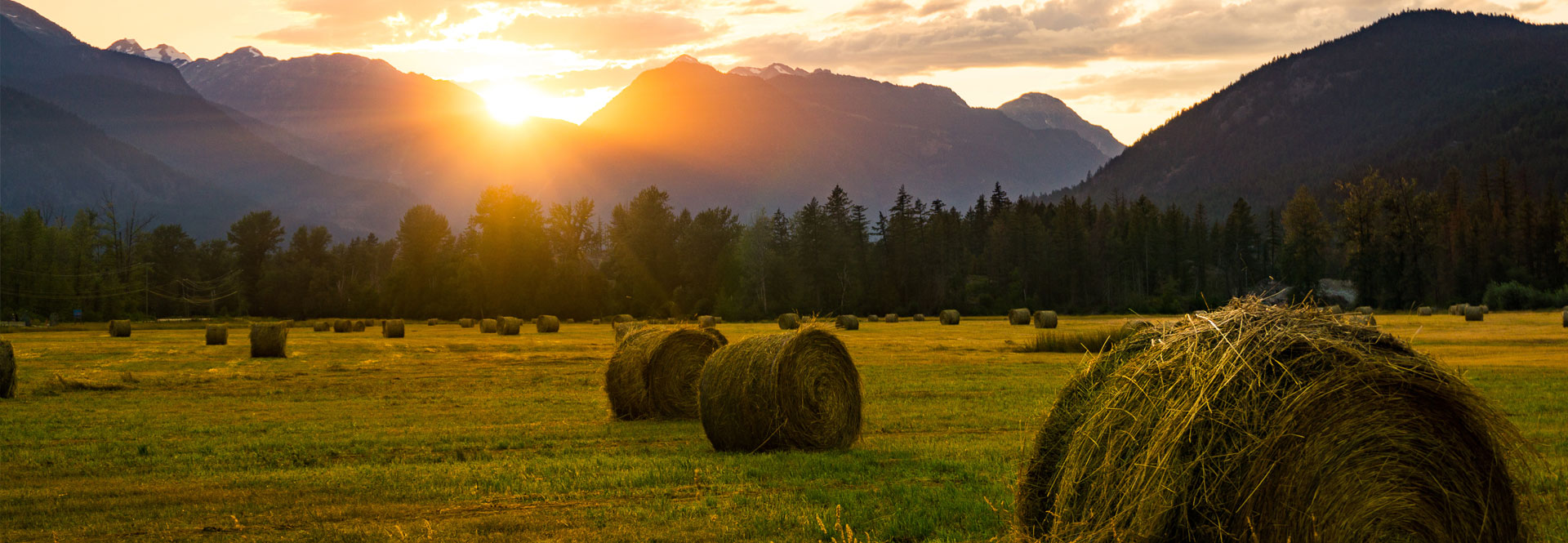Permitted Uses in the Agricultural Land Reserve
Protecting B.C.’s Land Resources
The ALR is a provincial land-use zone where agriculture is the priority use. The ALR comprises just 5% of BC’s total land base and is the area with the greatest agricultural capacity. As a finite and valuable resource, the province has decided to protect this land.
The Agricultural Land Reserve Use Regulation identifies uses of ALR land. ALR land owners who wish to pursue other uses or to subdivide their property must make an application under the Agricultural Land Commission Act (the “ALC Act“) and secure approval from the ALC. The Agricultural Land Reserve General Regulation sets out application procedures.
Agricultural Activities in the ALR
Common farming and ranching activities in the ALR include, but are not limited to:
- Agroforestry
- Grapes
- Mushrooms
- Berries
- Tree Fruits
- Vegetables (field, greenhouse)
- Nuts
- Grains and oilseeds
- Forage crops
- Ornamentals (floriculture, horticultural, nursery crops)
- Green housing
Agricultural Land Reserve Use Regulation
Below is a partial list of permitted activities in the ALR. Land use activities permitted in the ALR Regulation do not require an application or approval of the ALC if the use complies with any conditions or parameters set out in the ALR Use Regulation. For more detailed information, please refer to the ALR Use Regulation and the Index of ALC Policies.
Farm Uses – Part 2 of the ALR Use Regulation
Permitted farm uses are uses in addition to regular farming/ranching as noted above. These uses are for the most part directly linked to agriculture. Permitted farm uses can be restricted but not prohibited by local government. Many of the permitted farm uses are subject to conditions, thresholds, or other requirements. Examples of permitted farm uses include:
- Wineries & Cideries
- Storage, packing & processing of farm products
- Timber production, harvesting and silviculture
- Equestrian facilities
- Application of soil amendments
- Farm retail sales
- Temporary or seasonal agri-tourism activities
- Agroforestry
- Production of compost with conditions
- Land development works for farm purposes
Permitted Non-Farm Uses – Part 3 of the ALR Use Regulation
Permitted non-farm uses are uses that may or may not be linked directly to agriculture and are considered compatible with agriculture and have low impacts on the land base. Some permitted non-farm uses can be prohibited by local governments. Many of the permitted non-farm uses are subject to conditions, thresholds, or other requirements. Examples of permitted uses include:
- Home based business
- Temporary sawmill subject to conditions
- Pet kennels and breeding facilities
- Production, storage and application of Class A compost
- Production & development of biological products used in integrated pest management
- Aggregate extraction less than 500 m3
- Conservation & passive recreation & open land parks
- Education & research (not schools)
- Force mains, trunk sewers, gas and water pipelines within an existing right of way

